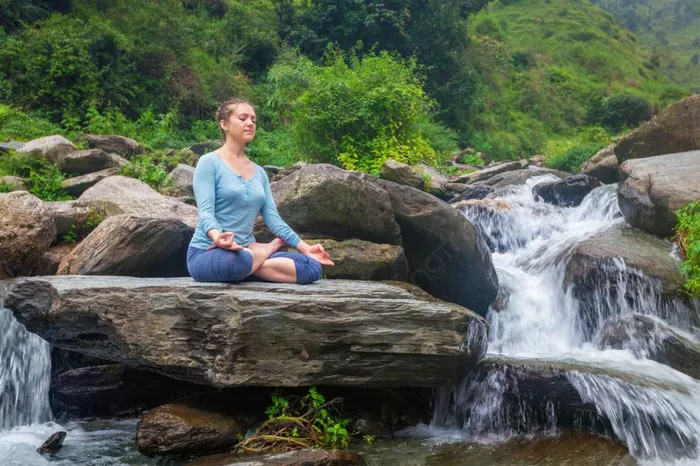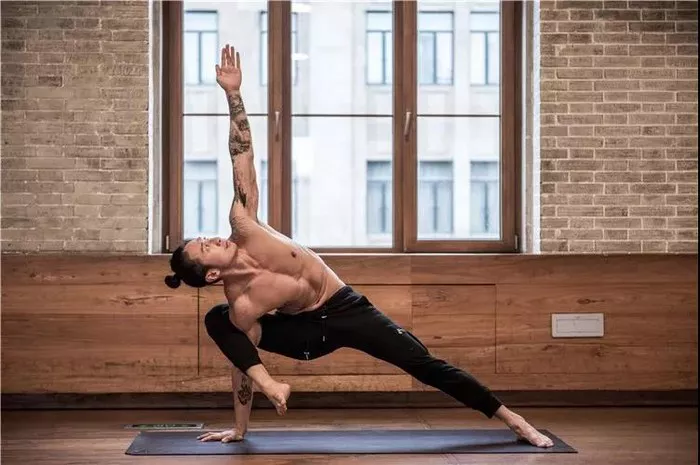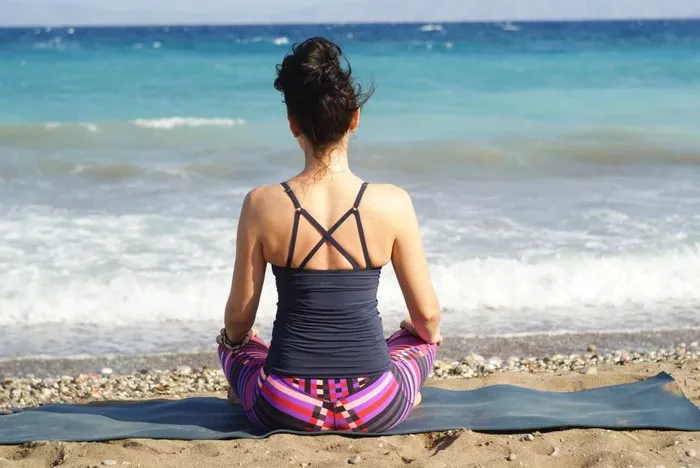Yoga has been practiced for centuries and has evolved into various forms, each with its unique characteristics and benefits. Among these, Hatha and Hot Yoga have gained significant popularity in recent years. Hs Yoga is often regarded as the foundation of many modern yoga styles, focusing on physical postures and breath control. It aims to bring balance and harmony to the body and mind through a series of asanas and pranayama . On the other hand, Hot Yoga is practiced in a heated room, typically at temperatures ranging from 35 to 42 degrees Celsius. This added element of heat intensifies the practice, increasing flexibility and promoting detoxification. Understanding the nuances of these two forms of yoga is essential for those seeking to enhance their physical and mental well-being through yoga practice.
Hs Yoga
Origins and Philosophy
Hs Yoga traces its roots back to ancient India. It is based on the principles of the Yoga Sutras of Patanjali, which outline the eight limbs of yoga. The physical postures and breath control in Hs Yoga are designed to prepare the body and mind for deeper states of meditation and spiritual awakening. The philosophy emphasizes the union of body, mind, and spirit, believing that by achieving balance and harmony within oneself, one can experience a greater sense of peace and fulfillment.
The Practice
Asanas: Hs Yoga incorporates a wide variety of asanas, ranging from standing poses like Tadasana (Mountain Pose) to seated and reclining poses. These poses are held for a certain duration, allowing the body to stretch, strengthen, and realign. For example, in Warrior I pose, the legs are strengthened, the hips are opened, and the torso is stretched, improving overall body stability and flexibility.
Pranayama: Breathing techniques such as diaphragmatic breathing and alternate nostril breathing are an integral part of Hs Yoga. These techniques help to calm the nervous system, increase oxygen supply to the body, and enhance concentration. For instance, during diaphragmatic breathing, the abdomen expands and contracts, filling the lungs with more air and promoting relaxation.
Benefits
Physical Fitness: Regular practice of Hs Yoga can improve flexibility, strength, and balance. It helps to tone muscles, increase joint mobility, and correct postural imbalances. For example, the forward bends and twists in Hs Yoga can stretch the back muscles and relieve back pain caused by prolonged sitting.
Mental Well-being: The focus on breath and movement in Hs Yoga helps to reduce stress and anxiety. It promotes mindfulness and concentration, allowing practitioners to be more present in the moment. The relaxation at the end of the practice, in the form of Savasana (Corpse Pose), helps to calm the mind and relieve mental fatigue.
Physiological Improvements: Hs Yoga has been shown to improve circulation, boost the immune system, and regulate the endocrine system. The stretching and twisting of the body stimulates the internal organs, enhancing their function. For example, certain poses can massage the digestive organs, improving digestion and relieving constipation.
Hot Yoga
Origins and Evolution
Hot Yoga was developed in the 20th century by Bikram Choudhury. He designed a series of 26 postures and two breathing exercises to be practiced in a heated room. The idea behind the heat was to warm up the muscles more quickly, allowing for deeper stretches and increased detoxification through sweating. Over the years, variations of Hot Yoga have emerged, with some studios offering different sequences and temperatures.
The Practice Environment
Temperature and Humidity: As mentioned, the room is heated to a relatively high temperature, usually maintained between 35 to 42 degrees Celsius. The humidity is also controlled to create a specific environment that challenges the body and promotes sweating. This intense heat requires practitioners to stay hydrated and listen to their bodies to avoid overexertion.
Class Structure: A typical Hot Yoga class follows a set sequence of postures, which is repeated in each session. The instructor guides the class through the poses, emphasizing proper form and breathing. The consistency in the sequence allows practitioners to track their progress and improve over time.
Benefits
Enhanced Flexibility: The heat in the room makes the muscles more pliable, enabling deeper stretches. This can lead to significant improvements in flexibility, especially for those who struggle with tight muscles. For example, in the standing backbend pose, the heat helps to open up the chest and spine more effectively than in a regular yoga class.
Detoxification: Sweating profusely during Hot Yoga helps to eliminate toxins from the body. The increased circulation and sweating flush out impurities, leaving the body feeling refreshed and rejuvenated. However, it’s important to note that proper hydration is crucial to support this detoxification process.
Cardiovascular Endurance: The combination of the heat and the physical exertion in Hot Yoga provides a cardiovascular workout. The heart pumps blood more efficiently to cool the body down, improving overall cardiovascular health. This can be beneficial for those looking to improve their endurance and stamina.
Equipment and Attire
Hs Yoga
Yoga Mat: A good quality, non-slip yoga mat is essential for providing a stable surface during the practice. It should be thick enough to cushion the joints but not too thick that it affects balance.
Comfortable Clothing: Loose-fitting, breathable clothing is recommended. This allows for free movement and comfort during the various asanas. For example, yoga pants and a moisture-wicking top are popular choices.
Blocks and Straps: These accessories can be helpful for beginners or those with limited flexibility. Blocks can be used to modify poses and provide support, while straps can assist in reaching for the feet or stretching the arms.
Hot Yoga
Specialized Mat: In addition to a regular yoga mat, some practitioners prefer a mat with better grip and sweat absorption for Hot Yoga. These mats are designed to handle the moisture and prevent slipping during the sweaty practice.
Towel: A large, absorbent towel is a must for wiping away sweat and providing extra grip on the mat. Some studios also offer rental towels for convenience.
Water Bottle: Staying hydrated is crucial in a hot yoga class. A reusable water bottle should be brought to the class to drink water during breaks and replenish fluids lost through sweating.
Safety Considerations and Precautions
Hs Yoga
Proper Alignment: Incorrect alignment in the asanas can lead to strains and injuries. It’s important to learn the correct form from a qualified instructor and listen to the body’s signals. For example, in a forward fold, rounding the back instead of hinging at the hips can put excessive pressure on the spine.
Gradual Progression: Beginners should avoid overexerting themselves and gradually build up their strength and flexibility. Pushing too hard too soon can result in muscle soreness and injury. Starting with basic poses and gradually adding more challenging ones is a safer approach.
Pre-existing Conditions: People with certain medical conditions such as back problems, joint disorders, or heart conditions should consult a doctor before starting Hs Yoga. The instructor should also be informed of any health issues to ensure appropriate modifications are made.
Hot Yoga
Hydration: Dehydration is a significant risk in Hot Yoga. It’s essential to drink plenty of water before, during, and after the class. Electrolyte-rich drinks can also be beneficial to replace the minerals lost through sweating.
Overheating: The high temperature in the room can cause some people to overheat. If feeling dizzy, nauseous, or lightheaded, it’s important to take a break, sit down, and cool off. Signs of overheating should not be ignored.
Skin Care: The combination of heat and sweat can irritate the skin. Using a mild, non-comedogenic moisturizer and wearing breathable clothing can help prevent skin issues. Additionally, showering immediately after the class to remove sweat and bacteria is recommended.
Tips for Beginners
Hs Yoga
Find a Reputable Studio and Instructor: Look for a studio with experienced instructors who can provide proper guidance and corrections. Reading reviews and asking for recommendations can help in choosing the right place to start.
Start Slow and Listen to Your Body: Don’t be overly ambitious in the beginning. Focus on learning the basic poses and breathing techniques. If a pose feels uncomfortable or painful, stop and ask the instructor for an alternative.
Practice Regularly: Consistency is key in yoga. Aim to practice at least a few times a week to see improvements in flexibility, strength, and mental well-being. Even short, daily practices can be beneficial.
Hot Yoga
Acclimate to the Heat: If you’re new to hot environments, it might be a good idea to take a few regular yoga classes first to get used to the postures. Then, gradually introduce yourself to the heat by starting with shorter Hot Yoga classes.
Bring the Right Gear: As mentioned earlier, having the appropriate equipment such as a good mat, towel, and water bottle is essential for a comfortable and safe Hot Yoga experience.
Be Mindful of Your Limits: The heat can make you feel more flexible than you actually are. Avoid pushing your body too far and respect your limits. The goal is to have a sustainable practice that benefits your body and mind without causing harm.
Conclusion
Hs and Hot Yoga both offer unique and valuable experiences for those interested in yoga. Hs Yoga provides a solid foundation with its focus on physical postures and breath control, promoting overall well-being and spiritual growth. Hot Yoga, with its heated environment, offers enhanced flexibility and detoxification benefits. However, it’s important to approach both forms of yoga with caution, taking into account safety considerations and listening to the body. By equipping oneself with the right knowledge, gear, and mindset, beginners can embark on a fulfilling yoga journey, reaping the physical, mental, and physiological rewards that these practices have to offer. Whether it’s the traditional Hs Yoga or the more intense Hot Yoga, the key is to find a practice that suits one’s individual needs and preferences and to enjoy the process of self-discovery and improvement.
Related topics

























